 |
|
AFSPC-11 (Atlas V) 14 April 2018 |
Space Launch Complex 41 Cape Canaveral Air Force Station |
A United Launch Alliance (ULA) Atlas V 551 rocket launched two spacecraft for the Air Force Space Command to a geosynchronous transfer orbit. Liftoff occurred from Space Launch Complex-41 at Cape Canaveral Air Force Station at 7:13 p.m. on 14 April 2018. Excerpts from the ULA press release and web site: [The AFSPC-11] mission was launched aboard an Atlas V Evolved Expendable Launch Vehicle (EELV) 551 configuration vehicle, which includes a 5-meter large Payload Fairing (PLF). The Atlas booster for this mission was powered by the RD AMROSS RD-180 engine. Aerojet Rocketdyne provided the five AJ-60A solid rocket boosters (SRBs) and RL10C-1 engine for the Centaur upper stage. Air Force Space Command (AFSPC)-11, is a multi-manifested mission. The forward spacecraft is referred to as CBAS (Continuous Broadcast Augmenting SATCOM) and the aft spacecraft is EAGLE (ESPA* Augmented GEO Laboratory Experiment). Managed by the Military Satellite Communications Directorate of the U.S. Air Force's Space and Missile Systems Center, the Continuous Broadcast Augmenting SATCOM (CBAS) satellite is a military satellite communications spacecraft destined for geosynchronous orbit to provide communications relay capabilities to support our senior leaders and combatant commanders. The mission of CBAS is to augment existing military satellite communications capabilities and broadcast military data continuously through space-based, satellite communications relay links. EAGLE is an Air Force Research Laboratory (AFRL) flight experiment program through the Integrated Experiments and Evaluation Division (RVE) of the AFRL Space Vehicles Directorate (AFRL/RV). The EAGLE spacecraft consists of an ESPA-based bus referred to as the EAGLE platform and a suite of payload experiments. Primary mission objective for the EAGLE platform is to demonstrate a maneuverable ESPA based space vehicle design which can accommodate up to six hosted or deployable payloads in GEO, and can be cost effectively replicated for multiple payload missions to either a GEO, LEO, or GTO orbit. EAGLE experiments will demonstrate enhanced capabilities in space system anomaly resolution and the capability to supplement ground based space situational awareness assets from a geosynchronous platform. EAGLE experiments will also provide new technologies to detect and identify system anomalies such as space weather events and characterize collision events due to micrometeorites. *ESPA = Evolved Expendable Launch Vehicle (EELV) Secondary Payload Adaptor |
|
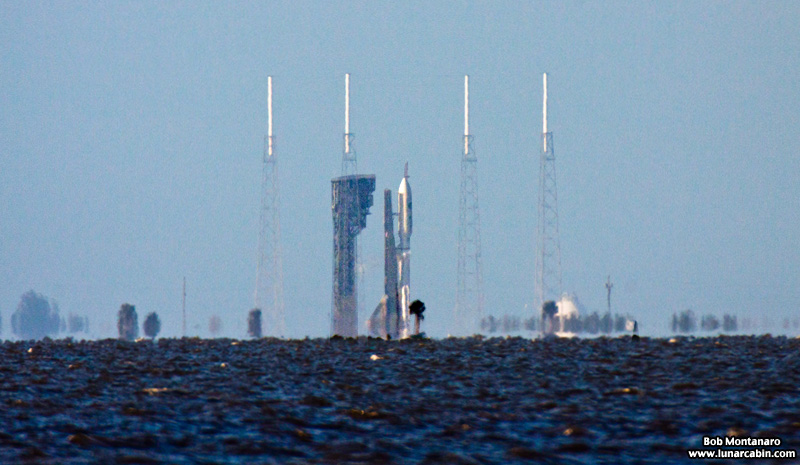 |
|
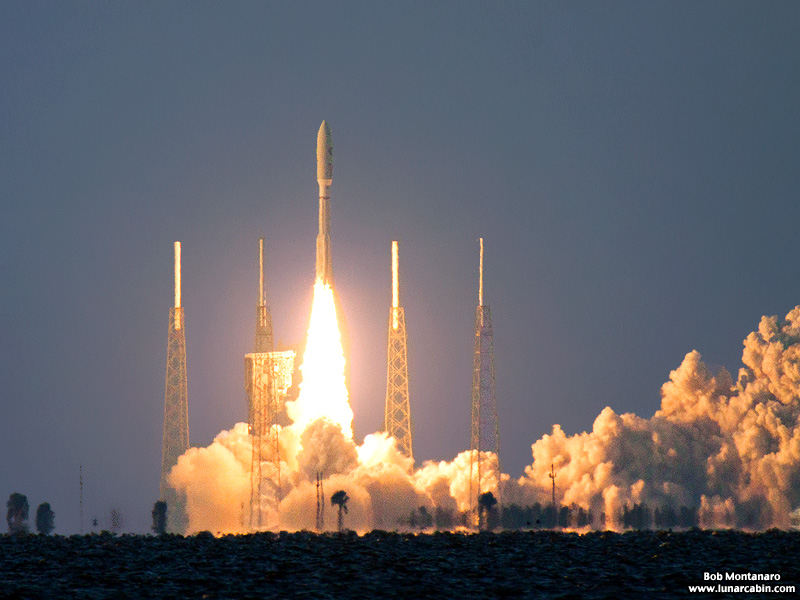 |
|
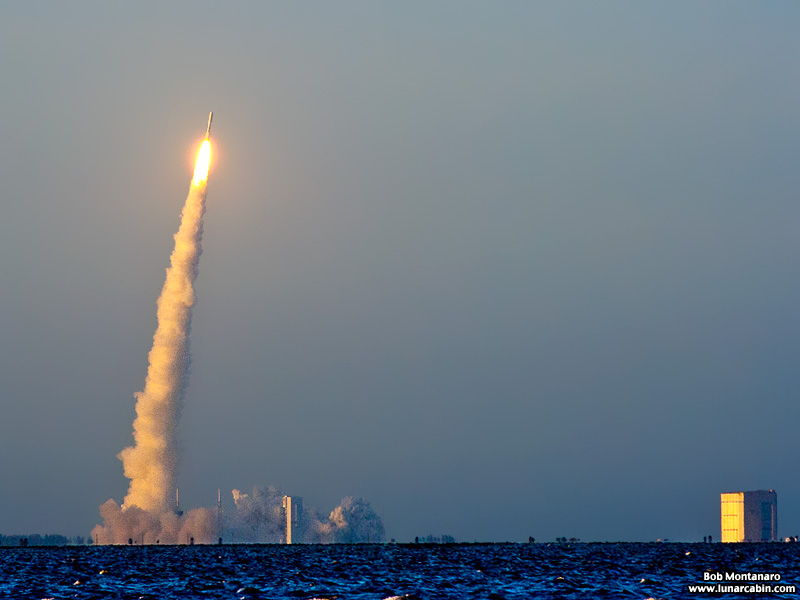 |
|
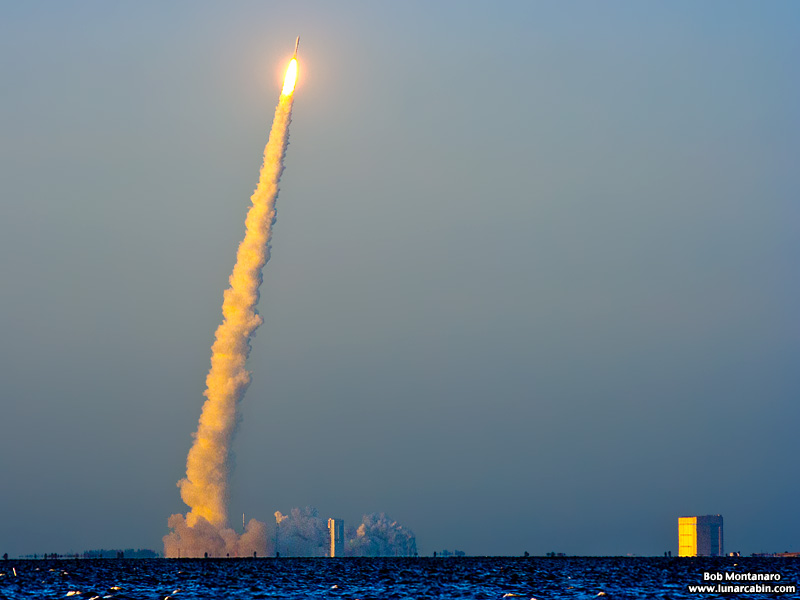 |
|
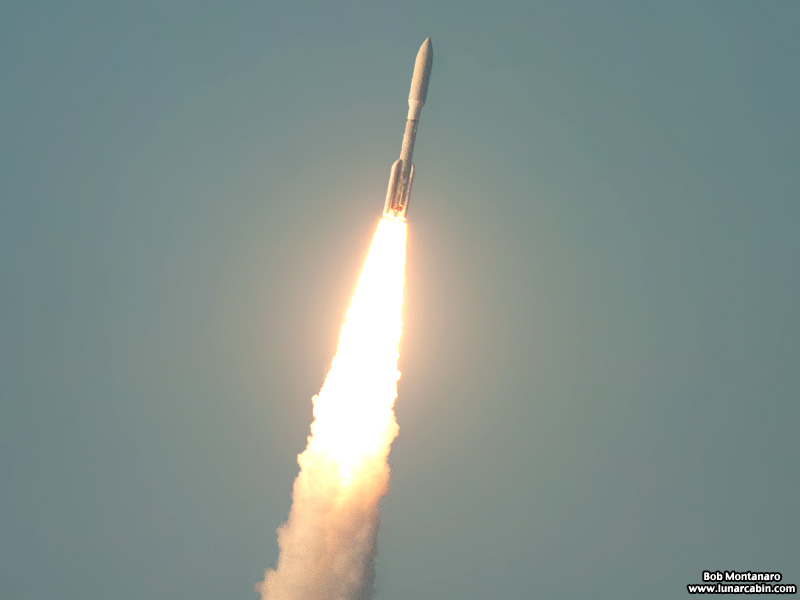 |
|
 |
|
| A focusing problem ruined the rest of the launch photos. Included below are three blurry photos of SRB separation to show the dynamic jettisoning of the SRBs as the Atlas V continues on into space. The SRBs land in the ocean and are not recovered. | |
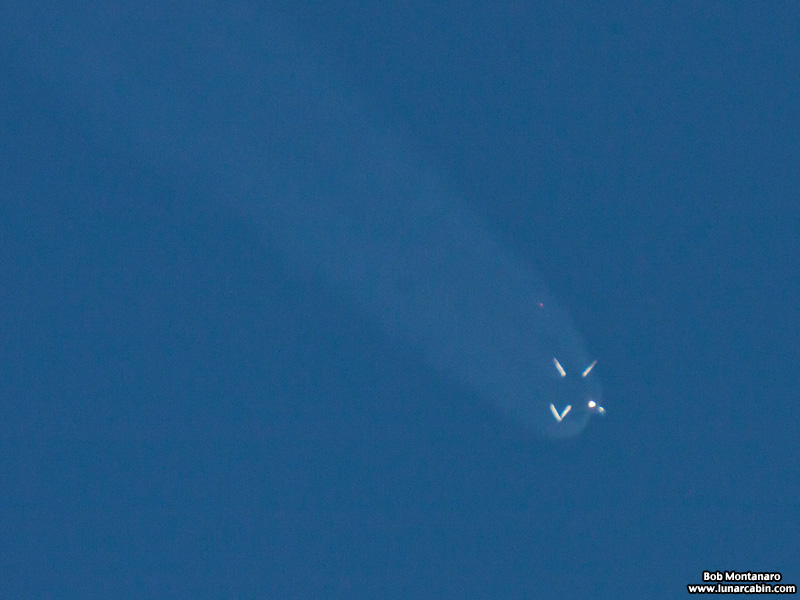 |
|
 |
|
 |
|
All contents copyright Lunar Cabin |
|